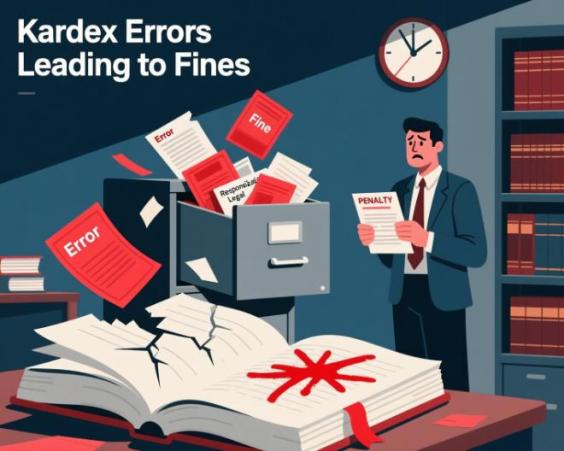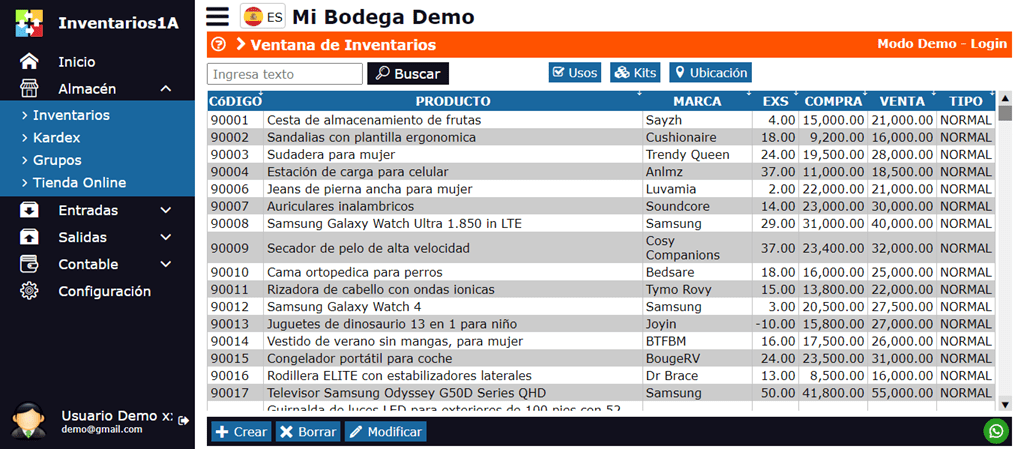Accounting Dictionary - Letter C

- Capital: The total amount of money or assets invested in a business, often used to finance operations or investments.
- Cash flow: The movement of money into or out of a business, often used to measure liquidity and financial health.
- Cost: The amount of money or resources spent to acquire or produce something, often used in financial reporting and decision-making.
- Credit: An entry in a company's financial records that represents a decrease in assets or an increase in liabilities or equity.
- Creditor: A person or organization that is owed money by a company, often used in accounts payable management.
- Current asset: An asset that is expected to be converted into cash within one year or within the company's normal operating cycle.
- Current liability: A liability that is expected to be paid within one year or within the company's normal operating cycle.
- Cash: The most liquid asset, often used to measure a company's ability to pay its debts.
- CPA (Certified Public Accountant): A professional certification for accountants, often required for public accounting and auditing.
- Chart of accounts: A list of all the accounts used by a company to record its financial transactions.
- Consolidation: The process of combining the financial statements of multiple companies into a single set of statements.
- Contingent liability: A liability that may or may not occur, often used in financial reporting and risk management.
- Corporation: A type of business organization that is separate from its owners, often used to raise capital and limit liability.
- Cost accounting: A method of accounting that focuses on the costs of producing goods or services.
- Cost of goods sold (COGS): The direct costs of producing and selling a company's products or services.
- Cash basis: A method of accounting that recognizes revenues and expenses when cash is received or paid.
- Cash equivalent: An asset that is easily convertible into cash, often used in financial reporting and liquidity analysis.
- Contra account: An account that is used to offset the balance of another account, often used in financial reporting and accounting.
- Contribution margin: The difference between a company's sales revenue and its variable costs, often used in cost-volume-profit analysis.
- Convertible bond: A type of bond that can be converted into common stock, often used to raise capital and reduce debt.
- Corporate tax: A tax on a company's profits, often used to fund government programs and services.
- Cost allocation: The process of assigning costs to specific products, departments, or projects.
- Cost center: A department or function within a company that is responsible for a specific set of costs.
- Cost-volume-profit analysis: A method of analyzing the relationship between a company's costs, volume, and profit.
- Credit balance: A balance in a company's financial records that represents a decrease in assets or an increase in liabilities or equity.
- Currency translation: The process of converting financial statements from one currency to another.
- Capital expenditure: An investment in a long-term asset, often used to finance growth and expansion.
- Capital gain: A profit made from the sale of an asset, often used in financial reporting and tax planning.
- Capital lease: A type of lease that is treated as a purchase for accounting purposes.
- Capitalization: The process of recording an asset or expense on the balance sheet, often used in financial reporting and accounting.
- Carrying amount: The value of an asset or liability on a company's balance sheet.
- Cash budget: A plan for managing a company's cash inflows and outflows.
- Cash disbursement: A payment made by a company, often used in accounts payable management.
- Cash discount: A reduction in the price of a product or service for paying in cash.
- Cash dividend: A payment made by a company to its shareholders, often used to distribute profits.
- Cash management: The process of managing a company's cash inflows and outflows.
- Certified Internal Auditor (CIA): A professional certification for internal auditors, often required for internal auditing and risk management.
- Certified Management Accountant (CMA): A professional certification for management accountants, often required for management accounting and financial analysis.
- Closing entry: A journal entry made to close a company's temporary accounts and transfer their balances to permanent accounts.
- Collateral: An asset used to secure a loan or other debt, often used in financial reporting and risk management.
- Commercial paper: A type of short-term debt instrument used by companies to raise capital.
- Committed cost: A cost that has been incurred or committed to, often used in financial reporting and budgeting.
- Common stock: A type of stock that represents ownership in a company.
- Comparative financial statement: A financial statement that compares a company's financial performance over time.
- Compensating balance: A balance required by a bank to compensate for the risk of lending to a company.
- Compilation: The process of gathering and presenting financial data, often used in financial reporting and auditing.
- Compliance audit: An audit that focuses on a company's compliance with laws, regulations, and standards.
- Compound interest: Interest earned on both the principal and any accrued interest, often used in financial reporting and investing.
- Consignment: A type of inventory that is owned by one party but held by another party.
- Consolidated financial statement: A financial statement that combines the financial data of multiple companies.
- Contingency: A potential event or situation that may affect a company's financial performance.
- Continuous audit: An audit that is performed on an ongoing basis, often used in financial reporting and risk management.
- Contribution: A payment made by a company to a charity or other organization.
- Controller: A senior-level executive responsible for a company's financial management and reporting.
- Convertible preferred stock: A type of preferred stock that can be converted into common stock.
- Corporate governance: The system of rules, practices, and processes by which a company is directed and controlled.
- Cost driver: A factor that affects the cost of a product or service.
- Cost object: A product, department, or project to which costs are assigned.
- Cost of capital: The cost of raising capital, often used in financial reporting and investing.
- Cost-benefit analysis: A method of evaluating the costs and benefits of a project or investment.
- Covenant: A promise or agreement made by a company, often used in financial reporting and risk management.
- Credit limit: The maximum amount of credit that can be extended to a customer.
- Credit memo: A document that reduces the amount of credit extended to a customer.
- Credit rating: A measure of a company's creditworthiness, often used in financial reporting and risk management.
- Current ratio: A measure of a company's liquidity, often used in financial reporting and risk management.
- Custodian: A person or organization responsible for holding and managing assets on behalf of another party.
- Capital stock: The total amount of stock issued by a company.
- Carrying value: The value of an asset or liability on a company's balance sheet.
- Cash book: A record of a company's cash transactions.
- Cash conversion cycle: The time it takes for a company to sell its inventory, collect its accounts receivable, and pay its accounts payable.
- Cash on delivery (COD): A payment method that requires payment upon delivery of goods or services.
- Cash register: A device used to record and manage cash transactions.
- Casualty loss: A loss resulting from an unexpected event, often used in financial reporting and risk management.
- Charge-off: The process of writing off a bad debt or other uncollectible amount.
- Charitable contribution: A payment made by a company to a charity or other organization.
- Check register: A record of a company's check transactions.
- Claim: A request for payment or reimbursement, often used in financial reporting and risk management.
- Clearing account: An account used to record and manage transactions that are not yet settled.
- Closely held corporation: A corporation that is owned and controlled by a small group of individuals.
- Comfort letter: A letter provided by an auditor to a company's lenders or other stakeholders, often used in financial reporting and risk management.
- Commingling: The act of mixing or combining assets or funds, often used in financial reporting and risk management.
- Commodity: A type of product or service that is widely available and interchangeable.
- Comparative analysis: A method of analyzing and comparing financial data, often used in financial reporting and decision-making.
- Compensating error: An error that offsets another error, often used in financial reporting and accounting.
- Completed contract method: A method of accounting that recognizes revenue and expenses when a contract is completed.
- Comptroller: A senior-level executive responsible for a company's financial management and reporting.
- Confirmation: A process of verifying the accuracy of financial data, often used in financial reporting and auditing.
- Conservatism principle: A principle of accounting that requires companies to recognize expenses and losses as soon as possible.
- Consistency principle: A principle of accounting that requires companies to use consistent accounting methods and procedures.
- Constant dollar accounting: A method of accounting that adjusts financial data for inflation, often used in financial reporting and analysis.
- Consumer Price Index (CPI): A measure of inflation, often used in financial reporting and analysis.
- Contingent asset: An asset that may or may not be realized, often used in financial reporting and risk management.
- Continuing operations: A company's ongoing business activities, often used in financial reporting and analysis.
- Contra revenue: A reduction in revenue, often used in financial reporting and accounting.
- Contract: A legally binding agreement between two or more parties, often used in financial reporting and risk management.
- Control account: An account used to record and manage transactions that are not yet settled.
- Controllable cost: A cost that can be controlled or influenced by a company's management.
- Correction of error: The process of correcting an error in financial reporting or accounting.
- Cost avoidance: The process of avoiding or reducing costs, often used in financial reporting and decision-making.
- Cost recovery: The process of recovering costs, often used in financial reporting and decision-making.
- Cost-plus contract: A type of contract that reimburses a company for its costs plus a markup or profit.
- Covenant not to compete: A promise or agreement not to compete with another company, often used in financial reporting and risk management.
- Credit card: A type of payment card that allows customers to borrow money from a lender.
- Credit note: A document that reduces the amount of credit extended to a customer.
- Credit terms: The terms and conditions of a credit agreement, often used in financial reporting and risk management.
- Cross-footing: A method of verifying the accuracy of financial data, often used in financial reporting and accounting.
- Cumulative preferred stock: A type of preferred stock that accumulates dividends over time.
- Current cost accounting: A method of accounting that values assets and liabilities at their current cost, often used in financial reporting and analysis.
- Cycle billing: A method of billing customers on a regular cycle, often used in financial reporting and accounts receivable management.
- Cycle counting: A method of counting and verifying inventory, often used in financial reporting and inventory management.





